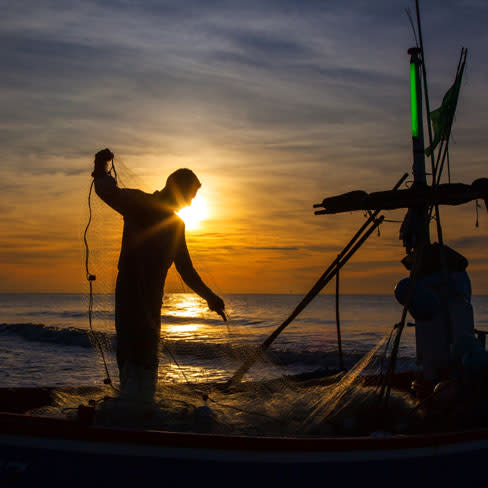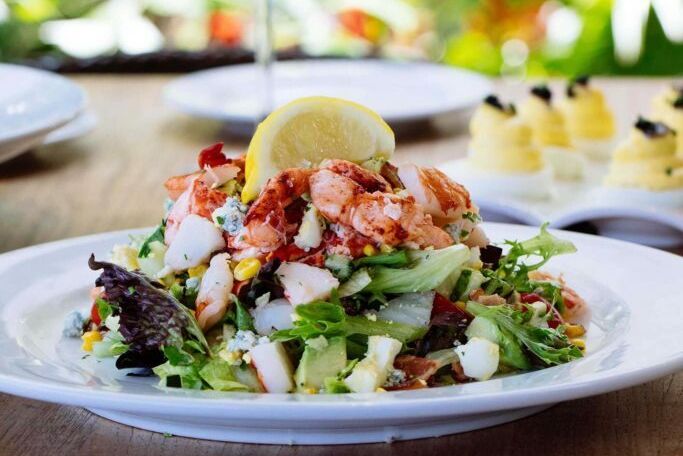Catch Your Own: A Guide to Gulf Fish

Captain Jim Klopfer, staff guide for CB's Saltwater Outfitters, shares some tips.
Speckled Trout
Speckled trout are the most abundant year-round species in Florida. Their flesh is very lean and delicate; put them on ice right away. You can use a variety of artificial lures and live baits, but a live shrimp under a float is tough to beat. Fish in grass flats in four to eight feet of water.
Flounder
Flounder are unusual-looking fish that lie flat on one side with both eyes looking up. Cooler months are more productive. Use jigs, or better, live and cut bait fished right on the bottom near a structure. Beaches, inshore artificial reefs, bridges and docks are good hunting ground.
Mangrove Snapper
Among the tastiest fish, they’ll bite on live shrimp and small baitfish under docks, bridges and other structures. In the summer they school up on the grass flats near the passes. Artificial reefs and ledges in the inshore Gulf are also productive.
Sheepshead
Striped black-and-white sheepies show up in late winter and are plentiful in spring. Struc-ture-oriented, they’re found near docks and bridges. Use live or frozen shrimp, sand fleas and fiddler crabs fished on a small hook. Delicious but difficult to clean due to their large rib cage.
Redfish
Redfish are delicious and are caught all year long in Sarasota. Their habitat varies from very shal-low grass flats to docks and other structures. Both artificial lures and live bait work well; the key to catching redfish is finding them.
Spanish Mackerel
Spanish mackerel’s flesh is soft and a bit oily, but delicious. Put on ice immediately and eat within a day or two. The flats, passes and inshore Gulf teem with these speedsters in spring and again in fall. Trolling silver spoons and plugs will quickly fill the cooler. Live bait also works well.
Black Sea Bass
Black sea bass have been showing up in decent numbers lately. Their fantastic fillets are snow-white and flaky. Cast jigs over the deeper grass flats near the radio tower (just south of Ken Thompson Park on City Island), Marina Jack and Middlegrounds (the north side of New Pass).
Florida Snapper
There are 17 species of edible Florida snapper, from the small, sweet yellowtail to the big American red, which yields thick, flaky filets with a firm texture—great in almost any preparation.
Pink Hogfish
Named for its long, pig-like snout, the pink hogfish has become a star on local menus, prized for its sweet flavor and firm meat. Its taste may stem from its diet—it roots around reef bottoms to consume lots of baby lobsters, rock shrimp and crab.
Grouper
A much-prized Gulf fish, the grouper has thick, white flaky meat. There are a number of Florida grouper species; red and gag are most readily available locally. What’s labeled grouper often isn’t; small filets and bargain prices can signal you’re not getting the real thing.
Mahi
Mostly caught in deeper waters or off the southern coast of Florida, mahi is also called dolphin or dorado. The meat is exceptionally firm, sweet, moist and mild. It shines on the grill but can be prepared in all sorts of ways, including raw for ceviche.
Pompano
This beautiful silver-and-blue-green pompano yields small, even filets that are firm and moist and exceptionally mild in flavor. Be sure to sample it New Orleans-style, cooked in parchment paper.
Tripletail
Some fishermen say if a grouper and snapper were to mate, the result would be a tripletail, which has the sweetness of the snapper and the thick, white, flaky flesh of a grouper. Simple preparations let the flavor take center stage.
For tips from Siesta Key's Big Water Fish Market on cooking fresh Gulf seafood, click here.
Click here to return to our guide to Gulf seafood. >>



